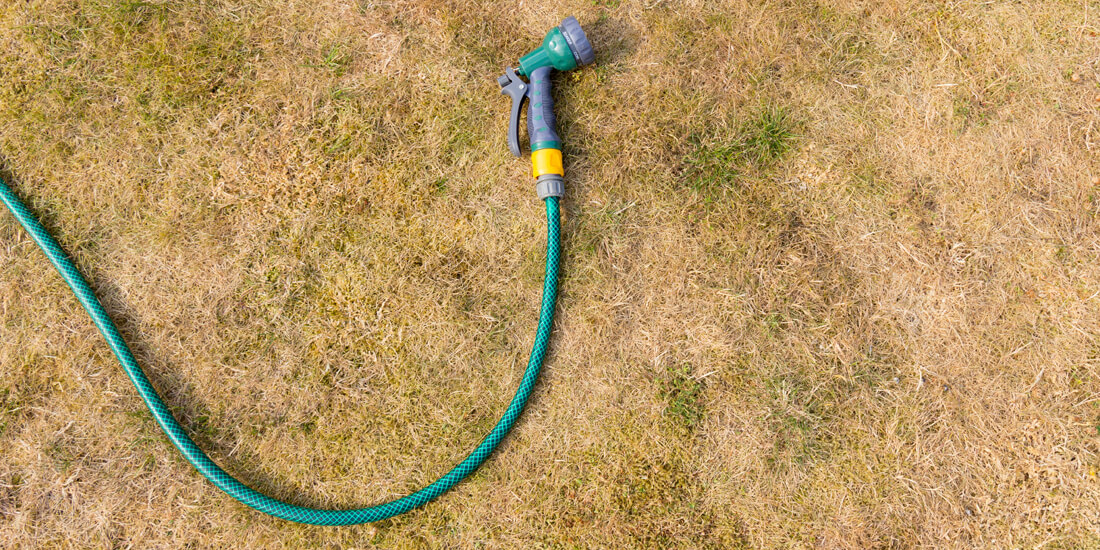The Post Drought Lawn Repair Guide

It has been a long hot summer here in the UK and although most of us have embraced the sun with days at the seaside and a glowing suntan, our lawns are not so enthusiastic.
The continued sun has caused a major drought, leaving our lawns longing for moisture, turning yellow or brown and drying out. This is where our drought lawn repair guide will help bring your lawn back to its former glory!
Can a lawn recover from drought?
Thankfully, despite the poor appearance, the grass is resilient, and we would expect most lawns to have survived the drought. The limp and parched look is simply the lawn in a state of dormancy and will return to its former glory once the moisture is returned to the soil.
You can view our range of the best lawn fertilisers to bring your lawn back to its former glory.
Over recent weeks, we have seen the weather break with rain showers coming back, so we expect many lawns to return to their natural green, healthy look. If your lawn is not improving, it may have died and require some work.
To determine if your lawn is dormant or dead, we need to assess the soil.
Is my grass dormant or dead?
The first step in drought lawn repair is to determine to what extent the warm weather has damaged your lawn - the question you need to ask is - "is my lawn dormant, or is the grass dead?".
Dormant Grass
A dormant lawn will present with brown/yellow leaves, but the plant's crown will still be green and with a healthy off-white colour at the roots.
Dead Grass
Dead grass will present with brittle and brown blades, crowns and roots. It will be easy to pull out of the soil.
Rejuvenating a dormant lawn
A dormant lawn will repair itself over time; however, there are steps we can take to speed the process up.
- Water the lawn as soon as hosepipe bans and water restrictions are lifted. A dormant lawn will require a lot of water to flood the lawn until there are almost puddles on the surface. This will return the moisture to the soil and roots of the plant.
- Aerate and scarify the lawn to allow air to flow through the soil and remove any thatch from the surface.
- Fertilising a lawn will return lost nutrients to the soil and give the plant the boost it needs. 2-3 weeks post-drought, a QUICK RELEASE: Spring/Summer fertiliser should be applied and watered in well at the time of application. Our quick release granular fertilisers feed your lawn intensively over 4-6 weeks, and you should see a noticeable difference will be seen within a few short weeks.
- Alternatively, you could use one of our spring/summer liquid fertilisers, which will feed your grass quickly, almost instantly delivering the nutrients it needs and should see results in the days that follow. Our liquid fertilisers will feed your lawn over a period of 6-8 weeks.
- Kill weeds and moss as soon as the grass has regained strength. Weeds and moss are a huge drain on soil moisture levels, so applying a Feed, Weed and Moss Killer will allow more moisture and nutrients to be supplied to the grass plant.
Repairing a dead lawn
Unfortunately, the only way to repair a dead lawn is to remove the old grass and reseed the area.
- Scarify to remove the dead material and expose the soil.
- Aerate by spiking to allow the soil to breathe.
- Add pre-turf fertiliser, water in and wait two weeks.
- Sow your chosen grass seed and water the seedbed.
- Keep moist, little and often, to allow grass to germinate and establish quickly.
For further advice on the technique, please see our video ‘How to Repair a Lawn’